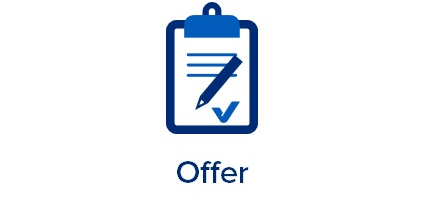
Remote visual inspection - Endoscopy
The Remote visual inspection is a visual monitoring technique allowing indirect inspection of inaccessible surfaces. This technique constitutes an important asset because the visual inspection remains at the base of any control. This kind of control is used to examine pipes, non-open (gate) valves, ventilation conduits, sheaths, chimneys, tanks, turbines wings and various equipments with opened volumes non accessible to direct sight.
Indeed external aspect of a piece can provide essential information about the condition of this one:
- Clear faults (such as wrinkles, cracks, wear, corrosion, open cracks ...)
- Hidden underlying defects that exhibit an irregularity on the outer surface, can be an indication of a more serious error indication on the inside.
- Choose the most appropriate NDT technique for in-depth studies.
- Determine the limitations of other selected NDT techniques (access, surface condition, etc.)
Training and experiment of the controller are very important
The specialists in Vinçotte are trained and certified specifically for the visual examination. When the eye’s capability reaches his limits for a traditional direct control, because of the surface position to be inspected, it is then necessary to resort to adapted optical instruments (rigid endoscope, flexible, video camera, ...).
The specialists can thus follow the inspection on the video screen of the apparatus and proceed, if necessary, to photographic captures and/or video recordings. These tools allow to document and to make a rigorous follow-up o the inspection.
Execution
To carry out this type of control in a good way, it is essential to define, as a preliminary, the specific inspection’s goal. First the specialists must have access to the information of the piece’s geometry, its accessibility and the conditions of examination. Indeed, endoscopes are composed of a rigid or flexible cable of variable length and diameter (depending of the accessory’s type) and at the end of which a focused lens is fixed.
Limitations
- In internal geometrical configuration which have a very small diameter or which are very complex.
- In turbid medium (soiled water, vapor, dust, ...)
- Under high temperatures, requiring the use of particular accessories and very short times of intervention.
- In zones with very high ionizing radiations.
Applications
This control is addressed to any company wishing to proceed to a visual examination of its installations. This examination is of application for the research of surface defects, such as corrosion, erosion, ...
Example for visual inspections of welds (following de norm EN 25817): base material, weld preparation, welding process, size control, surface inspection, enz.
Based on our extensive experience we can in several cases offer the following:
- Adising the customer for control programs during construction and during operation (periodic studies) to be realized.
- Research in the delivery of new pieces.
- Based on the findings during the visual examination: additional - and non-destructive or destructive - control proposals during construction (eg tensile test, hardness test, bending test, impact-strength test) and during operation (for example, replica for the detection of intergranular corrosion).
- enz.
The inspection occurs according to the requirements of relevant ASME, European and international standards and norms (ASME III, ASME V, ASME XI, EN 970, ISO 5817, Diverse ASTM).
The nuclear power plants and conventional power plants, steam turbines, gas turbines and cogeneration plants, but also oil & gas industry, pharmaceutical industry, enz.
Furthermore: all installations where welding must be inspected, search for leaks and supports inspection of piping and components for structural integrity.
Interested in this solution? Contact us!
Contact
Ask your question directly to the specialised team within your sector.


